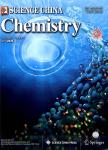Porous poly(triazine-heptazine)s:low-temperature solvothermal synthesis,*HCO intermediate activation and photocatalytic COreduction to CH
作者机构:Department of Chemistry and Chemical Engineering Central South University Hunan Joint International Research Center for Carbon Dioxide Resource Utilization School of Physics and ElectronicsCentral South University State Key Laboratory of Superlattices and Microstructures Institute of Semiconductors Chinese Academy of Sciences Department of Materials and Environmental Chemistry Stockholm University
出 版 物:《Science China Chemistry》 (中国科学:化学(英文版))
年 卷 期:2024年
核心收录:
学科分类:081702[工学-化学工艺] 081704[工学-应用化学] 081705[工学-工业催化] 07[理学] 08[工学] 0817[工学-化学工程与技术] 070304[理学-物理化学(含∶化学物理)] 0703[理学-化学]
基 金:supported by the National Natural Science Foundation of China (52173212 and 52103275) Hunan Province Funds for Distinguished Young Scientists (2022JJ10080) financial support from the European Research Council (ERC) Consolidator (PARIS-101043485) the Swedish Research Council (202204533) the Wallenberg Academy Fellow Program (KAW 2017.0166) from the Knut & Alice Wallenberg Foundation in Sweden and the Olle Engkvists Foundation (213-0206) in Sweden
摘 要:High-temperature ionothermal synthesis has been proven effective in preparing environment-friendly carbon nitride (CN)-based photocatalysts in either triazine or heptazine form for CO2reduction reaction (CO2RR).However,such a process is usually energy-intensive and suffers from partial carbonization that results in non-porous catalysts and degenerating their ***,we report the preparation of highly porous CN polymers (porous C6N7,C3N3,C4.5N5) through a low-temperature solvothermal polymerization of cyameluric chloride itself or cyanuric chloride itself,or both,*** such,it avoids unfavorable carbonization and allows for fine control of its chemical structure and significantly enlarged surface area (up to669 m2g-1).The pincer-like 2,2′-bipyridine sites of porous C6N7alter the photocatalytic CO2reduction pathways via stabilizing the*HCO intermediates,which promotes further hydrogenation to produce CH4in a high *** from the carbonization-free polymerization,high porosity,and*HCO intermediate activation,porous C6N7gave a superior CO2RR to CH4performance (17.18μmol g-1h-1) as well as high stability (5 successive cycles),outperforming the bulk and state-of-the-art counterparts of *** opens an avenue for the rational construction of efficient porous CN-based photocatalytic systems,demonstrating their great potential in energy conversion reactions.



